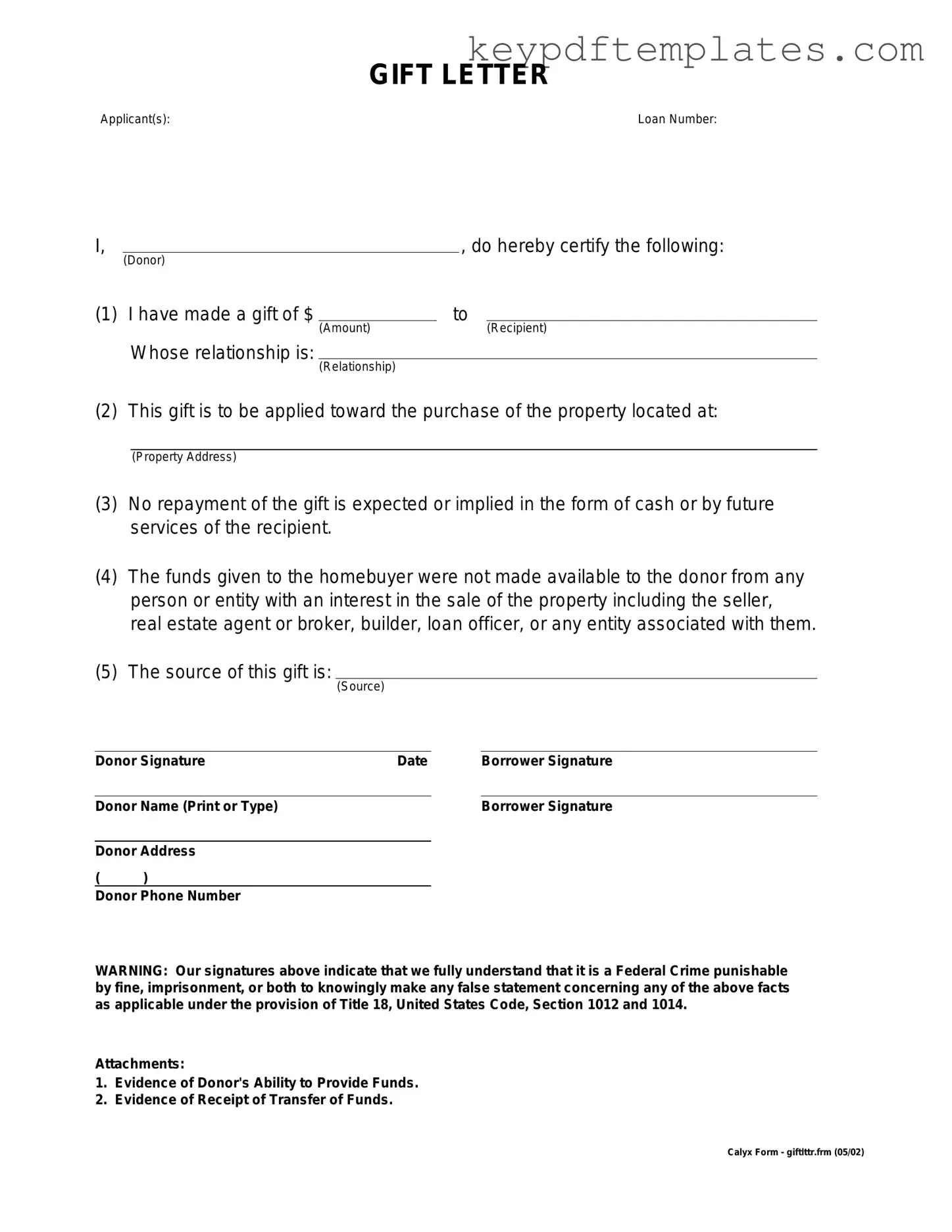Get Gift Letter Form
The Gift Letter form is a document used to verify that a monetary gift has been given without the expectation of repayment. This form is essential in various financial transactions, particularly in real estate, where it helps lenders confirm the legitimacy of funds used for a down payment. By providing clear evidence of the gift, it ensures transparency and compliance with lending requirements.
Modify Document Online
